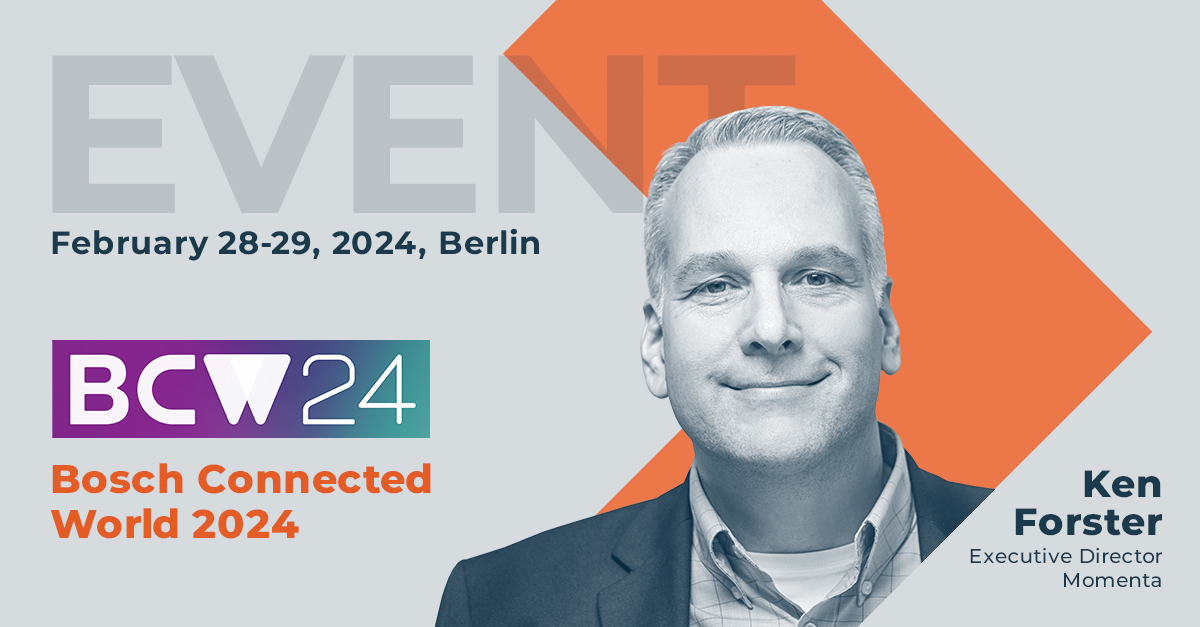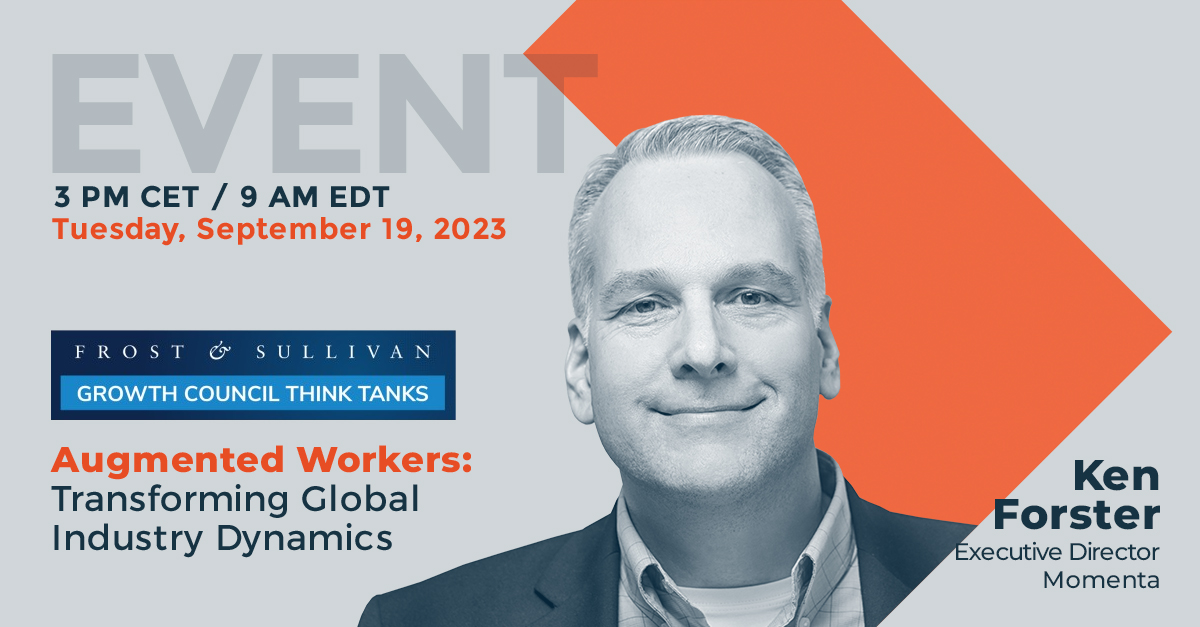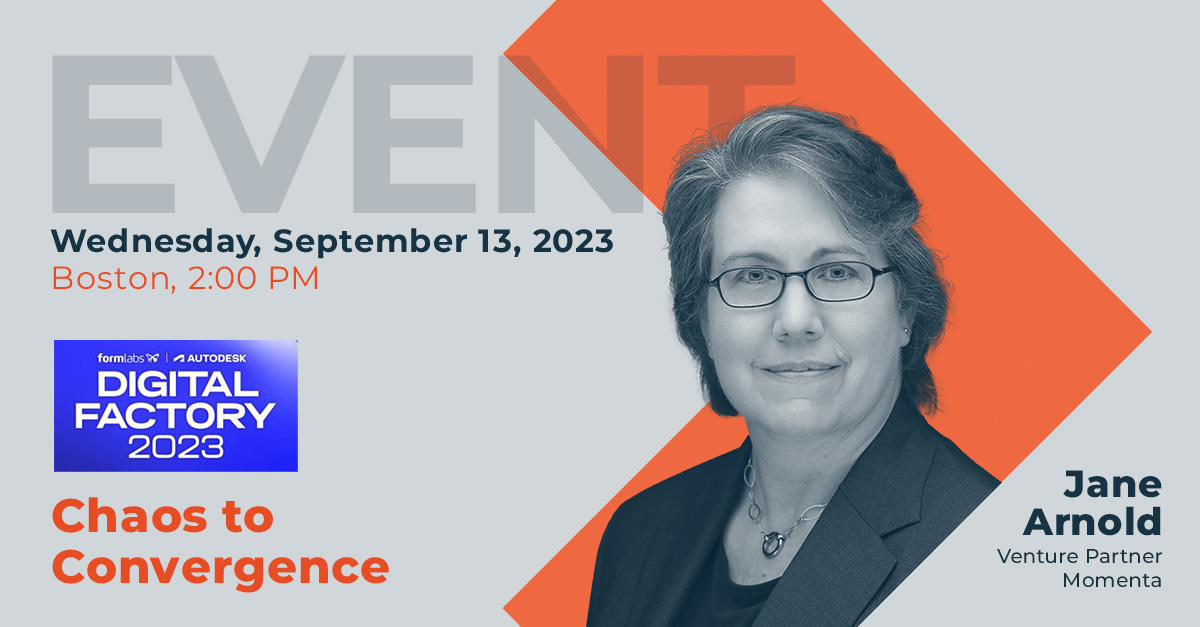Impressions
DCD Enterprise NYC 2018; 10 Disruptive Technologies for Data Centers
Ed Maguire

The Data Center Dynamics’ DCD Enterprise conference in New York brought together leaders in technology and business to focus on the transformation, evolution and disruption of the data center. Momenta’s Jim Fletcher presented at three sessions: “Digital infrastructure - the current state at the edge”, a roundtable “How will industrial IoT impact Data Center capacity requirements at the Edge?” and a plenary panel on “Data Centers at the Edge in 2025”. Insights Partner Ed Maguire was a last minute addition to a panel on Championing Collaborative Leadership in a Connected World.
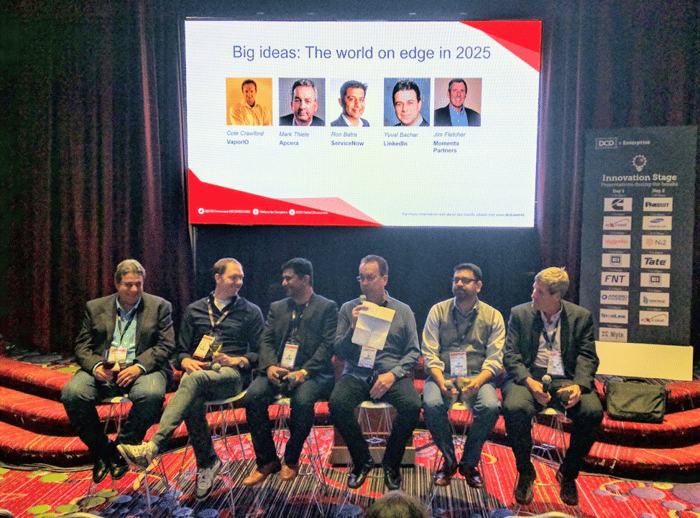
Edge Computing in the spotlight
One of the big topics this year is edge computing and the implications for IT. The growth of Edge computing is being driven by IoT devices with over 60 sensors being connected every second, from cars to yogurt machines, to traffic lights, autonomous vehicles, and cruise ships. These sensors are driving the compute to the edge. Increasingly data centers have been placed where energy costs are low, but the need for computing is moving closer to machines and remote areas.
Edge computing requires different management demands with different connectivity, environmental challenges, cooling, power, and implementations. The Challenges of edge implementation include unpredictable business growth, unique end users and apps, high density computing with limited availability, no traditional IT infrastructure, nontraditional data center space, and multiple owners and responsibilities.
Beyond technology to the social edge
One of the most interesting presentations came from author and USC lecturer Dr. Julie Albright, author of the forthcoming book Left to Their Own Devices: How Digital Natives Are Reshaping the American Dream. She spoke about the rise of “Digital Nomads” – and how connectivity has enables the effective extension of society and organizations to the “edge”. Co-working, co-living spaces and “gig economy” platforms are all reflections of a social “edge” that parallels the technological move to edge computing.
“Data centers at the edge in 2025” panelists were in general agreement that Edge Computing will be larger than the existing cloud, and it will enable users to create more applications. Edge can do a lot of things that the core can do. However, there is a knowledge gap at the edge as the technology still needs to be built.
A key challenge going forward will be to enable multi-tenancy at the edge, and data center neutrality. Momenta’s Jim Fletcher notes that when we look at DevOps methodology, we will need to think about deploying software to 40,000 data centers and different edges. There will be the need to manage the firmware and backhaul code. Edge-native applications are highly software-centric and will need to be architected to be facilities aware and latency aware. 5G technology promises to significantly reduce latency, and increase bandwidth enabling new solutions that have here to date have not been possible.
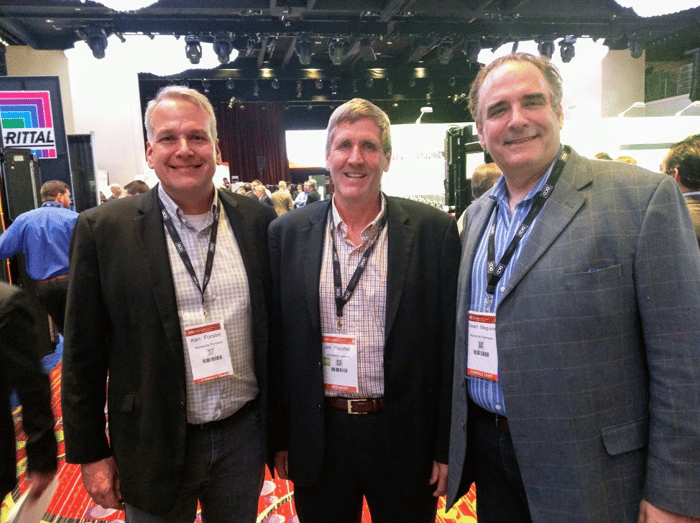
From left to right: Ken Forster, Jim Fletcher, Ed Maguire
Looking at the top 10 Disruptive Technologies for data centers
A presentation by Rhonda Ascierto of 451 Group and Uptime Institute shared a presentation on the top 10 technologies that practitioners regard as offering the most potential disruption. Given that half of data center costs are committed up front for facilities that need to last 15-20 years, there is a lot of attention paid to cost of capital but less focus on the impact of disruptive technologies. The top ten potential disruptive technologies include:
1. Micro-modular data centers – self-contained hardened cabinets that can be used indoors or outdoors. They benefit from plug and play installation and rapid delivery but require different operational practices. The disruptive potential of edge computing will drive demand for prefab micro-data centers
2. Storage-class memory – the holy grail of memory combines persistence of storage with speed of operational memory. It’s in early production. The gains in arrays are marginal and unproven, but bringing storage closed to processors could change architecture – with no need for 2B distribution/UPS for non-critical workloads
3. Silicon photonics – fiber optic links directly integrated to semi chips with the need for discrete electrical-optical conversion. It’s cheaper and faster than copper, but the risk of vendor lock-in means it only makes sense at scale. The benefit could be a disaggregation of IT subsystems and pooling without loss of performance.
4. Data center microgrids – localized energy sources for energy security, tied to utilities but able to operate in an island model. The pros are energy assurance and security, but it’s still more costly than existing utilities. This could become disruptive with energy outages.
5. Software-defined power – as a pooled resource matched to IT load needs, with automated capping rerouting storing and discharging energy. The advantage of dynamic capacity management is higher utilization, but it’s not straightforward to integrate data and it shifts risks to software with complex ROI. The disruption could come from leaner power capacity, lower redundancy and higher utilization which equates to lower CapEx.
6. Data Center Management as a Service (DMaaS) – where encrypted data is transported to a vendor’s cloud for deep learning and big data analytics to be able to predict outages and downtime. This could lower risks and security, but there are data security concerns. There are insights that no single operator can provide and enable asset as a service.
7. Distributed resiliency – spreading workloads across sites using networks, data replication, load balancing and traffic switching. This could create higher availability and lower need for gen sets and improve survivability for facilities.
8. Direct liquid cooling – delivering liquid directly or indirectly to chips, reducing the need for fans. The advantages are lower power but it’s complex and new, also an added cost for air-cooled facilities. However direct liquid cooling could support higher processing speeds and more IT capacity in a power envelope. With AI on GPUs gaining ground this could become far more important.
9. Chiller-free data centers – with less mechanical refrigeration. This can reduce capex but requires a larger temperature band. Fears of IT failure rates will diminish while the pressure to reduce excess capital spend on cooling will grow.
10. Open Source infrastructure – Open Compute Projects and Open 19 are the next stage of IT commoditization, with more rack-integration of power and relaxed climatic specs. It can lower costs by 15-30% for IT and facilities, but to get to adoption there needs to be a more mature supply chain, including enterprise grade support.
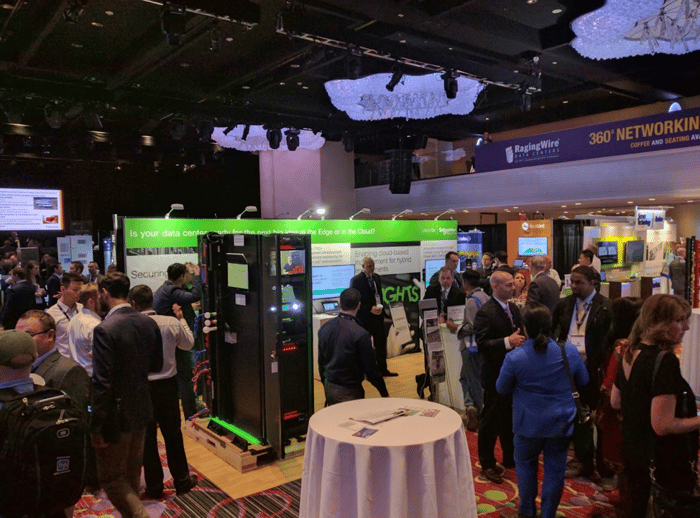
Looking at the impact of Blockchain
Another topic of focus is the impact of Blockchain technology on data centers. We heard quite a bit of debate on advantages and disadvantages of blockchain’s efficiency and energy consumption, with Kelly LeValley Hunt from BlockApps sharing her perspective on how blockchain technology empowers a new generation of distributed applications. There’s a lot of discussion of the potential use cases, and energy consumption (one hydroelectric utility company we spoke with mentioned that crypto mining accounted for nearly 50% of energy usage in the first four months of 2018!)

